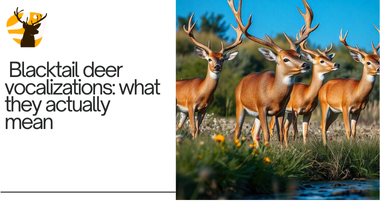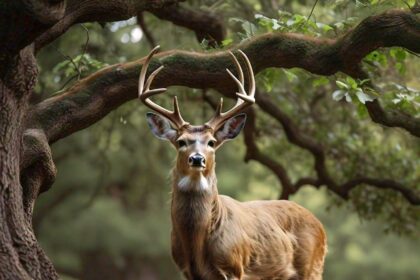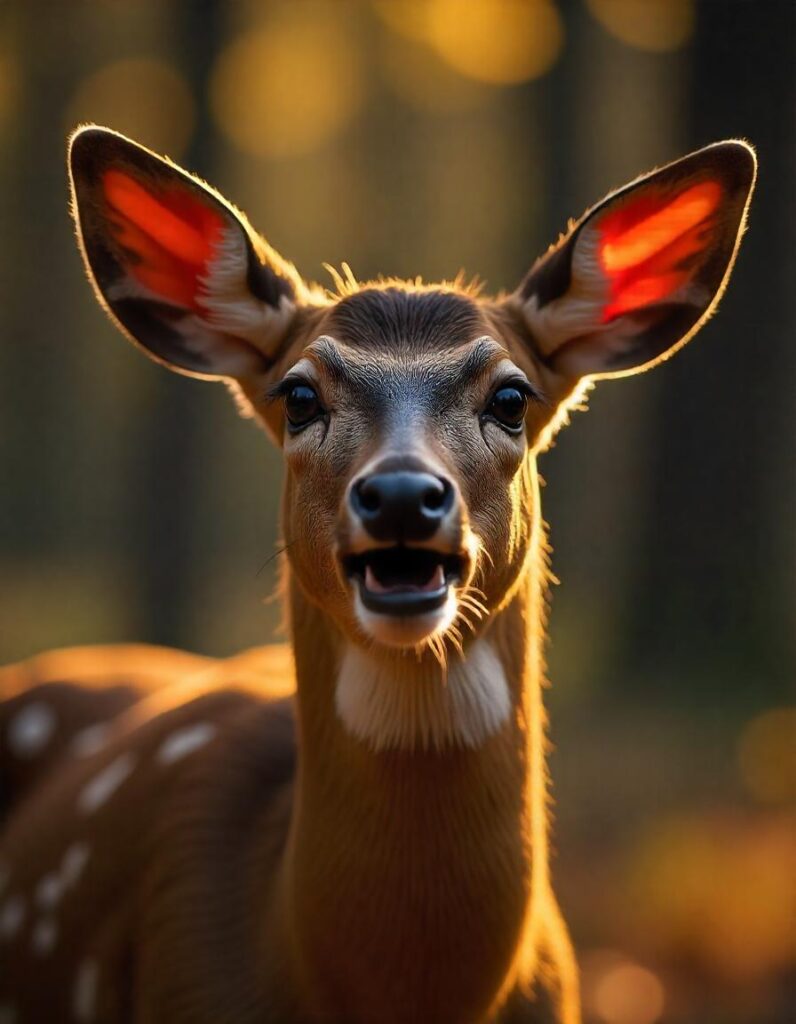
Blacktail deer vocalizations are more than sounds, they are a form of communication that has the potential to reveal important details during a hunt.
From a grunt, and snort, to a bleat, each sound has a specific meaning that holds vital clues to their behavior and environment.
But what exactly are they saying, and how can understanding these sounds improve your connection with nature or your next hunting trip?
In this post, we’ll get to know the secrets of blacktail deer vocalization and reveal how understanding these sounds can help us connect better with nature and for hunters, even improve your success in the field.
What Are Blacktail Deer Vocalizations
Vocalizations are the sounds animals make to communicate with each other.
For blacktail deer, vocalizations are their way of expressing everything from fear to attraction.
While these deer are generally quiet, they produce a variety of sounds, especially in specific situations.
The vocalizations of the blacktail deer range from whispers to loud calls, and each sound plays a role in their social interactions.
Blacktail deer vocalizations also come in the form of soft grunts and louder snorts, each signaling different emotions.
The various types of vocalizations include the following:
1. Grunts
Blacktail deer vocalizations are often marked by the grunt, which is the most common sound they make.
It’s a low, throaty noise that bucks often use to communicate with one another, especially during the mating season.
Bucks grunt to assert dominance and show interest in does.
If you’re a hunter, recognizing this sound can be invaluable as it often means a buck is nearby, actively seeking a mate.
The timing of the grunts can indicate the rutting phase, making it essential to tune your ears to this vocalization when you’re in the field.
2. Bleats
Another type of blacktail deer vocalizations is bleats.
Bleats are higher-pitched sounds that serve different purposes depending on the context.
Does commonly use bleats to communicate with their fawns, especially when the little ones wander off or get separated.
In the context of mating, does may also use bleats to attract bucks.
When you hear a bleat, pay attention, there could be a doe looking for her young, or a buck may be responding to a receptive female nearby.
3. Snorts
Among the type of blacktail deer vocalizations include snorting.
Snorting is a sharp, explosive sound that blacktail deer make when they sense danger.
It’s a warning call that alerts other deer in the area to potential threats.
If you’re quietly observing wildlife and hear a snort, it’s a sign to remain still and assess your surroundings.
This vocalization can often be accompanied by body language, like stomping their feet, signaling they are wary of something in their environment.
4. Barks
Barks are another type of blacktail deer vocalizations.
While less common, the bark of a blacktail deer can be startling.
It’s a single, loud sound used as an alarm, typically made by does when they feel threatened.
This vocalization is used to alert deer of nearby danger.
If you’re out hiking or hunting and hear a bark, it’s a clear sign that something has disturbed the deer, and they are on high alert.
Why Understanding Vocalizations Matter
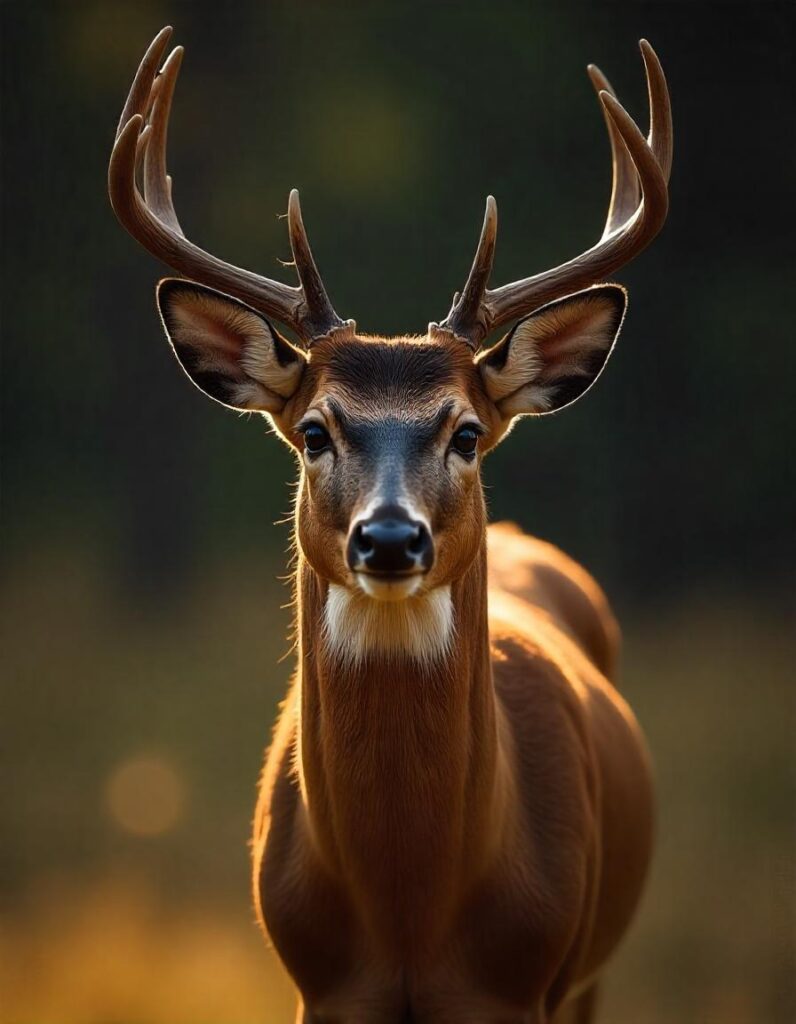
Recognizing and interpreting blacktail deer vocalization can provide several benefits, particularly for those who spend time outdoors. Here are some of the benefits.
1. Enhancing Hunting Success
For hunters, understanding the blacktail deer vocalizations is crucial.
Knowing when a deer is alert, mating, or in distress can help you determine your next move.
For example, hearing a buck grunt can indicate it’s time to set up for a potential shot.
Using call devices that mimic these vocalizations can also attract deer to your location.
Mastering this aspect of deer behavior can dramatically increase your chances of a successful hunt.
2. Connecting with Nature
Even for those who don’t hunt, understanding blacktail deer vocalizations can enrich your outdoor experiences.
The ability to interpret the sounds you hear in the forest adds another layer to your appreciation of wildlife.
It turns an ordinary hike into an opportunity to observe and understand the intricate relationships among animals in their natural habitat.
Imagine the thrill of recognizing a bleat and knowing a fawn is nearby or identifying the anxious snort of a deer that has sensed your presence.
3. Wildlife Observation and Photography
For wildlife photographers and enthusiasts, knowing the vocalizations of blacktail deer can lead to incredible opportunities.
By recognizing vocalizations, you can anticipate deer movements and behaviors, allowing you to position yourself for the perfect shot.
If you hear a snort, you might know to remain still, while a series of grunts may lead you to a scene of mating behavior.
The Seasonal Changes in Vocalizations
Blacktail deer vocalization sounds can vary throughout the seasons.
During the spring and summer, you may hear more bleats as does call for their fawns.
As autumn approaches and the rut begins, grunts and other mating calls become more prevalent.
Understanding these seasonal changes can give you insights into deer behavior, helping you know what to expect at different times of the year.
In late summer and early fall, the male blacktail deer become more vocal as they establish dominance and prepare for the breeding season.
This is the time to listen closely for those grunts, as the bucks are actively seeking out does.
During this period, knowing the sounds they make can be particularly advantageous for hunters looking to capitalize on the heightened activity.
Conservation and Blacktail Deer Vocalizations
Understanding blacktail deer vocalization goes beyond just enhancing hunting and wildlife observation.
It can also play a role in conservation efforts.
By studying blacktail vocalizations and behaviors, researchers gain insights into population dynamics, habitat use, and the impacts of environmental changes.
For instance, if certain vocalizations decrease in frequency, it may signal stress in the population due to habitat loss or increased human interference.
Monitoring these sounds can provide critical data for conservation programs aimed at protecting blacktail deer and their habitats.
As more people become interested in wildlife conservation and naturalist activities, understanding blacktail deer vocalization will be crucial.
Educating the public about these sounds can foster a deeper respect for wildlife and its preservation.
If you are a passionate hunter, a wildlife enthusiast, or just curious about nature, being aware of the communication patterns of blacktail deer can enhance your outdoor experiences and deepen your connection to the environment.
The next time you find yourself in blacktail deer territory, take a moment to listen closely.
You may uncover stories of survival, communication, and the detailed dance of life that unfolds around you, often hidden in plain sight.
If you are hunting for sport or aiming to provide food for your family, understanding your surroundings and using the right tools can make all the difference.
Taking time to practice with your riffle and familiarize yourself with the sounds of the deer will help ensure a productive and rewarding hunt.
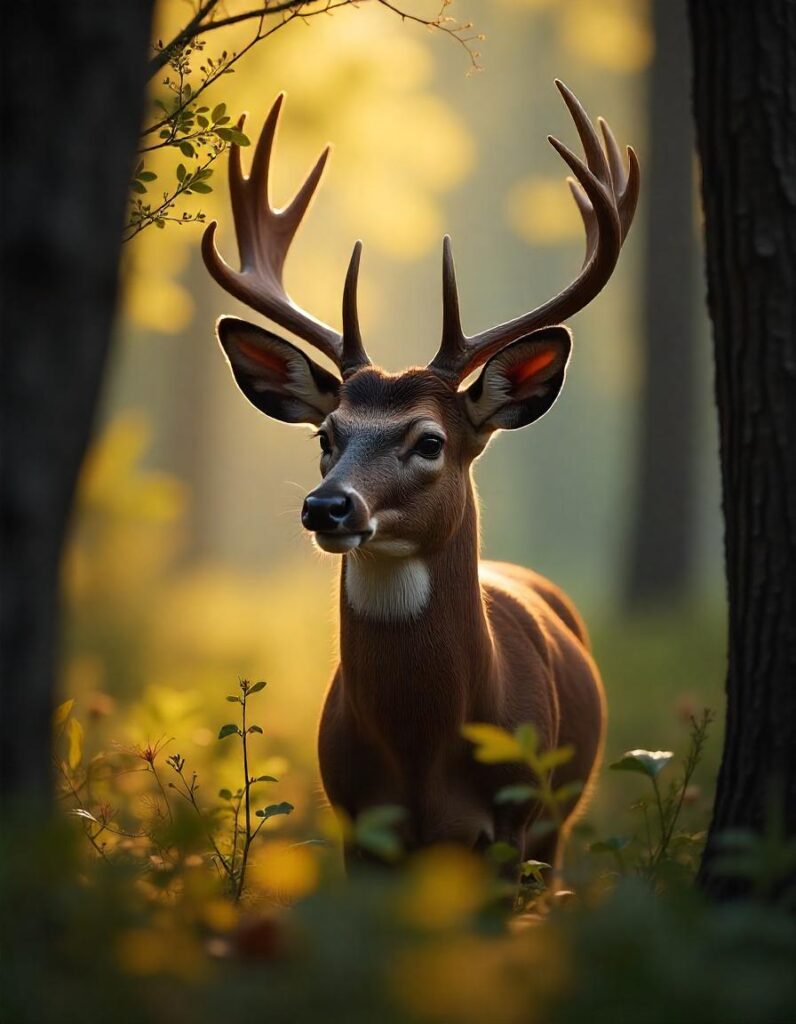
Conclusion
The sounds of blacktail deer are more than mere noise, they are a complex language that reveals the inner workings of these fascinating animals.
By learning to interpret these vocalizations, you gain a greater understanding of blacktail deer and enrich your experiences in the wild, regardless of whether you’re hunting, hiking, or simply enjoying the beauty of nature.
So next time you’re in the woods, keep your ears open.
The deer are talking, so it’s time to listen.
Are you ready to explore more about the hidden language of blacktail deer and become a true expert in their behavior?
Subscribe to Deer Hunting Gateway for insightful wildlife tips.
Share your experiences with deer vocalizations with us in the comments.
Happy hunt!




